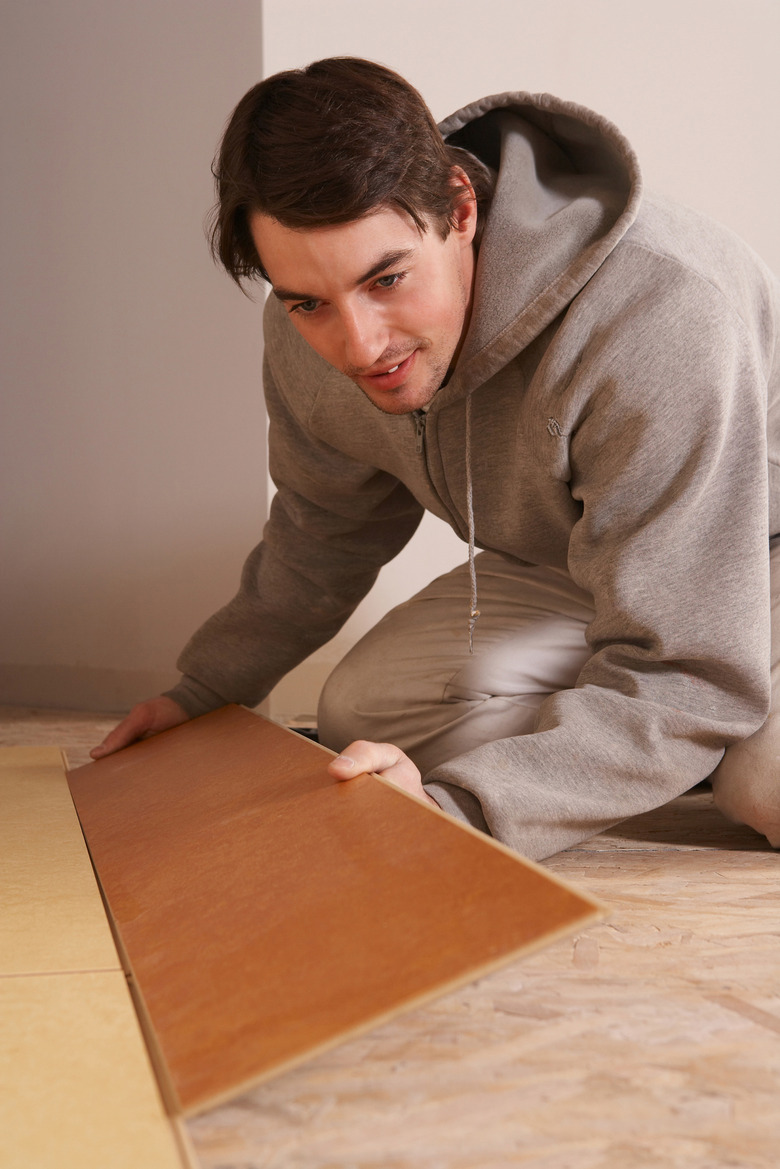Will A Hair Dryer Fix Swollen Laminate Flooring?
Laminate is a durable flooring option that offers the look of hardwood but is not as vulnerable to scratches or discoloration. It can withstand heavy traffic, making it ideal for busy homes. The one thing laminate does not tolerate well is moisture, which causes it to swell. Unlike wood flooring though, applying heat using a hair dryer does not usually repair the damage.
Why a Hair Dryer Won't Work
Why a Hair Dryer Won't Work
Laminate flooring does not tolerate moisture well because the high-density fibers that make up its core absorb water rapidly, causing the flooring to swell along the edges of the boards. This distortion does not disappear after it dries. If you pull the damaged boards up and find moisture trapped beneath the underlaymemt but no swelling is visible in the planks above, these may be salvageable, but it's more likely you'll have to replace these as well. Repair the source of the moisture and use a hair dryer or a heater to dry the undamaged flooring and subfloor. If the flooring begins to swell at all as you're drying, remove it and replace it as well.
Glue or Moisture
Glue or Moisture
If your laminate flooring was glued down, the source of the swelling may not be caused by moisture. After gluing, the joints of the boards may swell slightly as they absorb the water in the glue. This is temporary and often resolves itself in three to four weeks. Using a hair dryer is not recommended in this case because if you dry the laminate too much, you cause shrinkage, which may not be repairable.
Proper Repair of Swollen Laminate
Proper Repair of Swollen Laminate
Laminate flooring that swells due to moisture should be disassembled and new pieces installed. To do this, remove the baseboard or quarter round and then take the flooring apart one row at a time until you reach the swollen section of flooring. Stack the planks in order of removal to make cutting easier if it will be necessary. You can cut the new boards using the damaged pieces as a guide. Replace the damaged boards with boards from the outer edge of your original flooring and then replace the outer boards with new boards that have been allowed to acclimate in the room for at least 72 hours. In older installations, doing this limits the chances a new board might stand out because it has no wear or discoloration as older boards tend to have.
Preventing Swelling and Other Damage
Preventing Swelling and Other Damage
Never allow water to remain standing on your laminate floors for any length of time. Mop up spills as they happen and avoid washing or wet-mopping your laminate floor using soap, water, oil-soaps, or any type of liquid cleaner to prevent swelling, warping or delamination. Using these products may also void your flooring's warranty. Steel wool, chlorinated and ammonia-based cleaners or abrasives are also not recommended. Hard-to-clean dirt such as gum can be hardened with an ice cube and gently scraped way with a plastic scraper. Clean your floors with a dust mop or a vacuum and maintain a relative humidity inside your home between 35 and 65 percent to prevent swelling. This relative humidity can be achieved by using a dehumidifier during summer months and a humidifier to prevent shrinkage caused by drier air in the winter months.
